It has been a case of one step forward, two steps back for Millwall this season. Following three consecutive losses in all competitions in August, the Lions thought they might be starting to turn a corner with victory over Stoke City. However, since then, they have been unable to really get going in the league.
It was such an indifferent start that led to the departure of Gary Rowett, who left by mutual consent during the recent international break. Millwall had cemented themselves as a top mid-table side under Rowett, finishing no lower than 11th in England’s second tier.
The stumbling block in Rowett’s tenure was Millwall’s inability to finish inside the playoff spots. They had looked dead certs to do so last season, occupying a position in the top six for the majority of the campaign, only to falter towards the tail end of the season. The Lions ultimately finished eighth.
Prior to the start of this 2023/24 campaign, expectations at The Den were to go one step further and improve on last season’s finishing. However, at the time of writing, Millwall sit 14th in the EFL Championship and are the division’s third-lowest scorers.
In this tactical analysis, we will assess Millwall’s inconsistent start to the season and compare it with previous campaigns. We will also provide analysis of the tactics imposed by Rowett to determine why the London side has struggled at home this season, as well as its impact on team performances.
An underwhelming start
Rowett arrived at The Den in October 2019 and, until his departure, had been the second longest-serving manager in the Championship, behind Coventry City’s Mark Robins. Rowett’s Millwall often struggled for goals, but their strengths lay in their defensive play, as they were a hard team to beat.
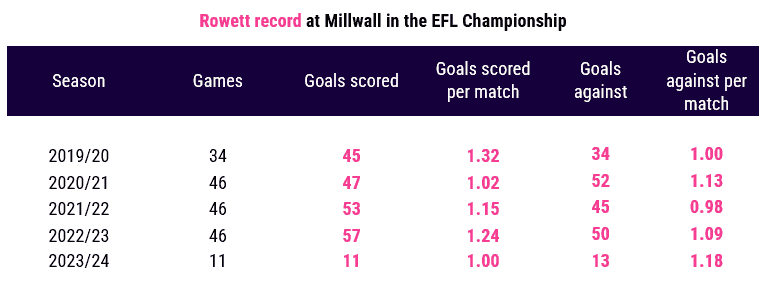
Millwall’s strong defensive performances during Rowett’s time are shown in the above table. It is noticeable, however, that Millwall’s goals against per match rate had increased marginally this season. This, coupled with low scoring rates – at lower levels than in previous seasons – has contributed to a slow start for the East London side.
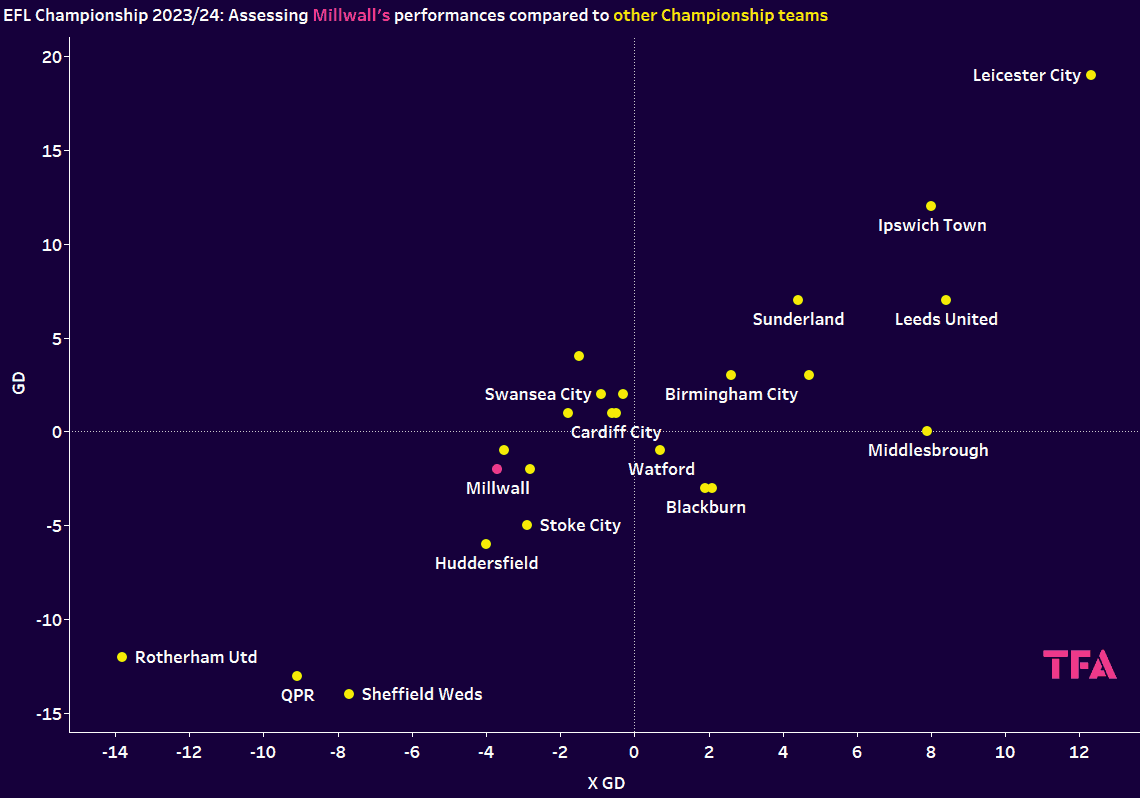
The plot above evaluates the performance of clubs in the EFL Championship this season, before midweek fixtures, by means of expected goal difference and actual goal difference. Teams in the top left quadrant can be considered overachieving, while those in the bottom right are underachieving. The teams positioned in the top right and bottom left quadrants perform as expected.
Whilst Millwall’s actual goal difference (-2) is marginally better than expected (-3.7), it is shown that Millwall have been amongst the worse-performing sides in the division this season.
This suggests that there has been a lack of progression in team results from previous seasons, likely contributing to Rowett’s exit. For a side with promotion aspirations, it is plausible that Rowett took his former side as far as he could.
However, it could be construed that Rowett’s dismissal may have been slightly premature, given Millwall’s recent history of making slow starts to the season. In the last three seasons before this campaign, the Lions have averaged 15 points in the first 11 matches.
This is precisely the same as what Millwall accumulated under Rowett this season. It is, therefore, plausible that, given more time, Rowett could have turned things around.
Struggles at The Den
However, a positive take from Millwall’s season so far is their away form. Since August, they remain unbeaten away from the Den, as 56% of their total league points have come away from home.

The bar chart shows that Millwall’s successes on the road coincide with fewer possessions on average. For instance, in the opening fixture against Middlesbrough, the Lions won 1-0 with only 32% possession; they recently beat Plymouth 2-0 at Home Park with only 35% possession.
During the matches against Boro and Argyle, Millwall kept a deeper defensive line than average, allowing the opposition to dominate the ball and commit players forward.
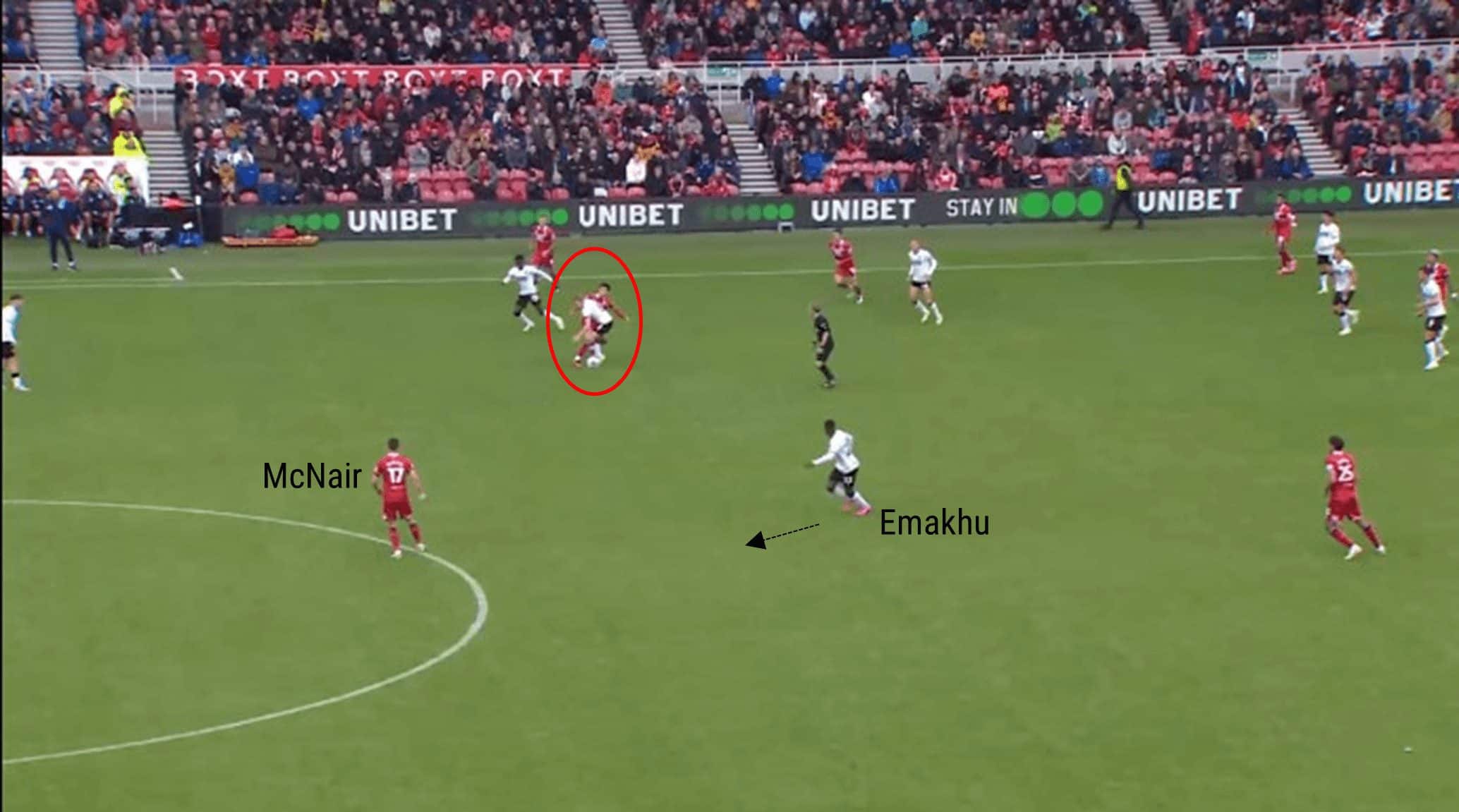
The above image shows Millwall regaining possession from Boro, who have committed seven players forward, and the right-back Paddy McNair is caught in a central position in the Millwall half. The ball is then played out to the left-side touchline for the advancing Aidomo Emakhu to chase, stretching the Middlesbrough back line.
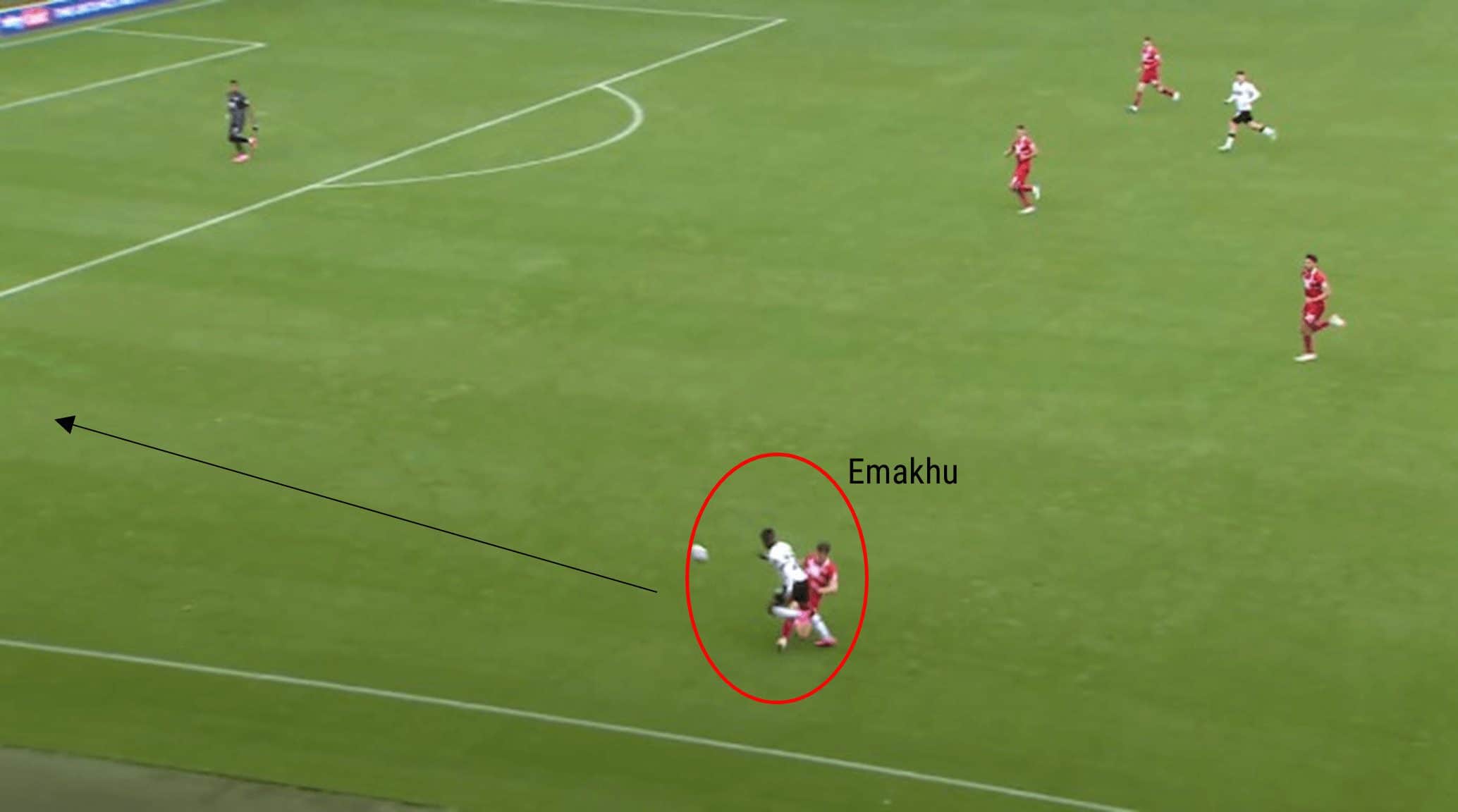
Emakhu uses his pace to sprint past McNair, who is too late with his tackle.
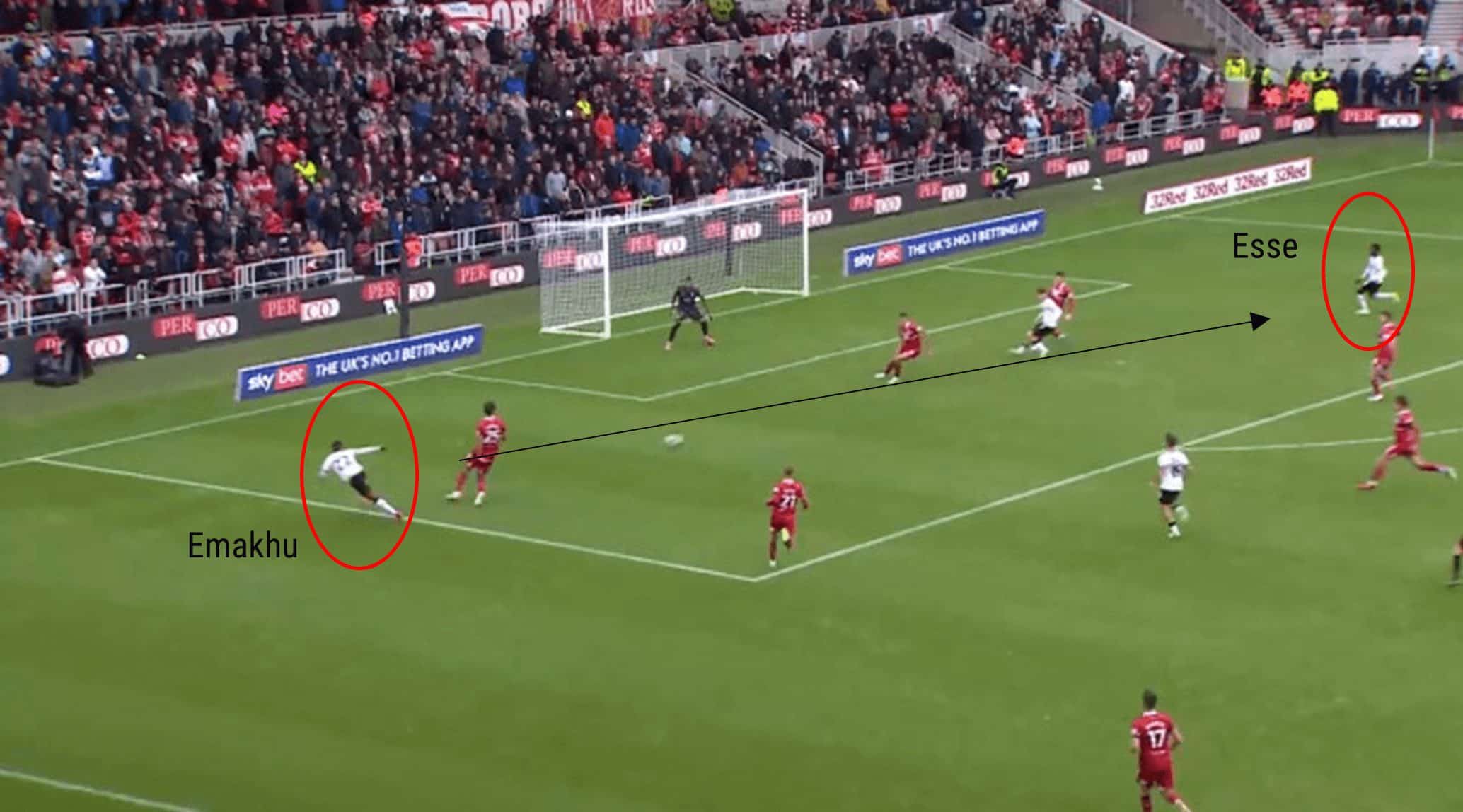
Emakhu eventually provides a low assist for Romain Esse to fire Millwall into the lead. On occasions like this, Millwall do well, as they often look to play very direct when they can dispossess their opponent.
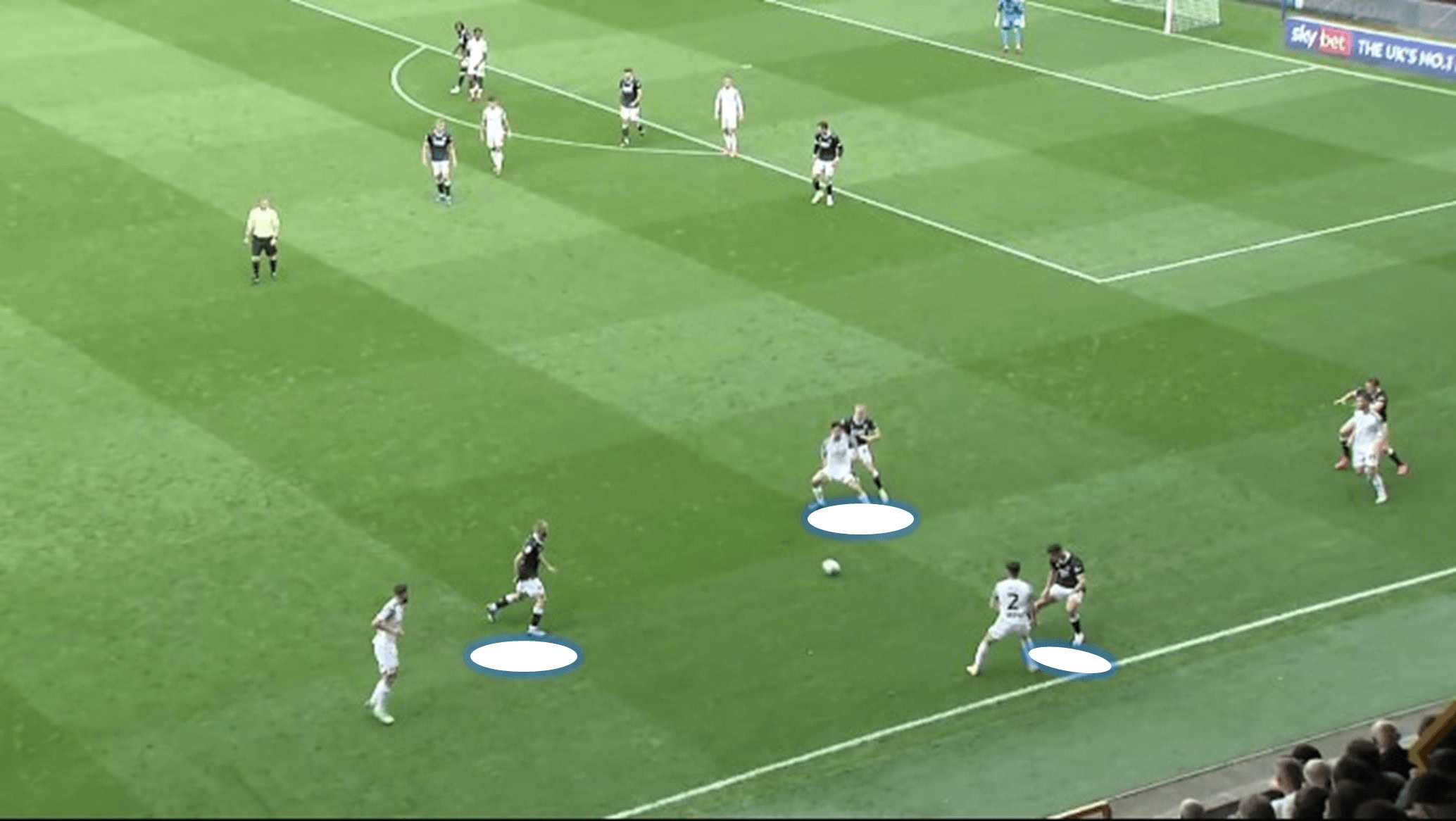
It is shown here that Millwall commit in the middle of the pitch, making the space compact for the opponent.
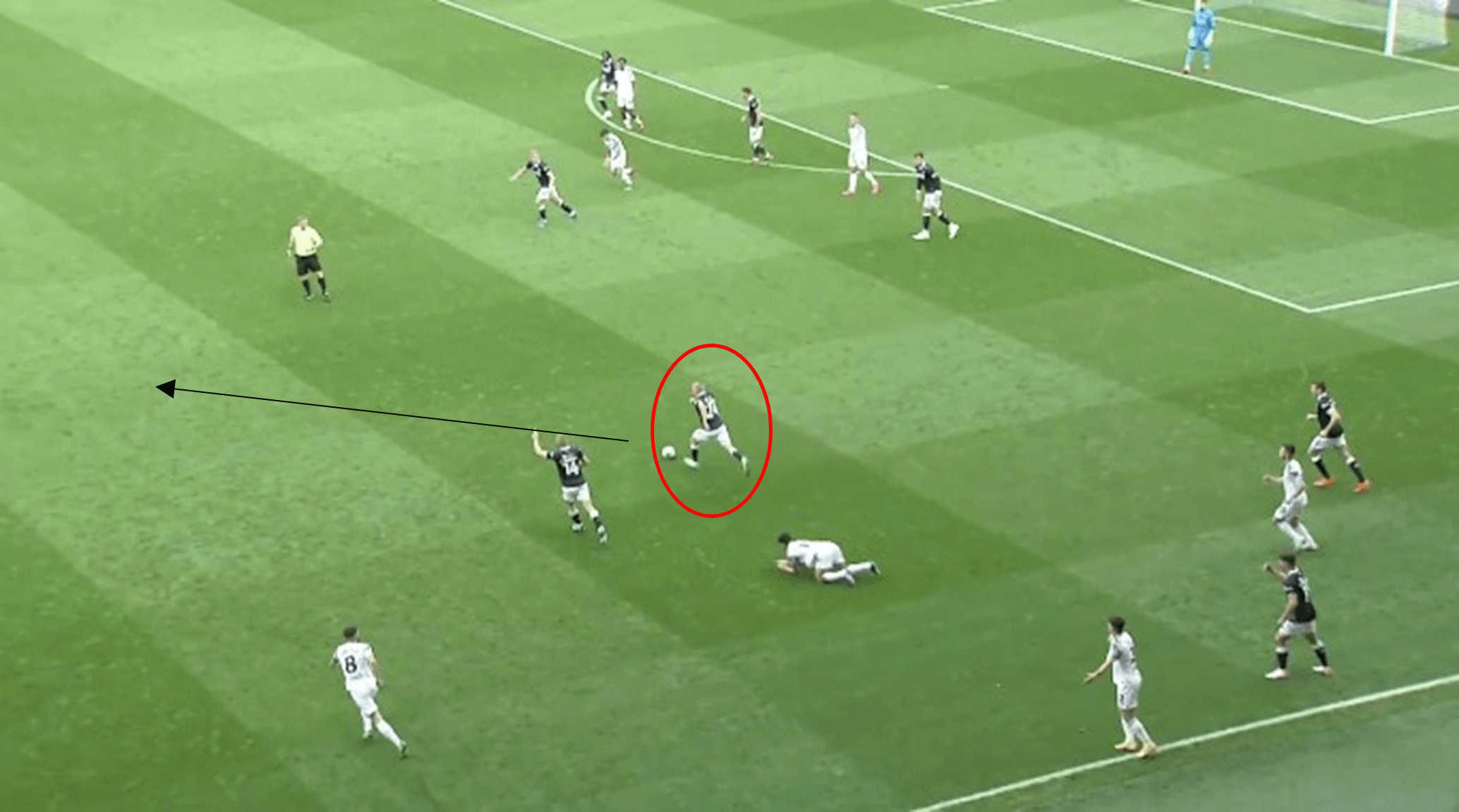
Millwall are able to break away following a successful tackle and drive forward. By holding shape and not engaging the more forward players in the press, the forwards are then able to engage in the attacking play if such a counter as above occurs.
Rowett’s former side would often look to press in the middle third of the pitch, just as the opposition are looking to progress their attacking phase. They have completed 7.83 tackles in the middle third per 90, which is the third highest in the division.
The direct style of play suits Millwall but they have struggled at home when the opposition allows them possession. They lack pace in driving the attacking phase, struggling to play through teams.
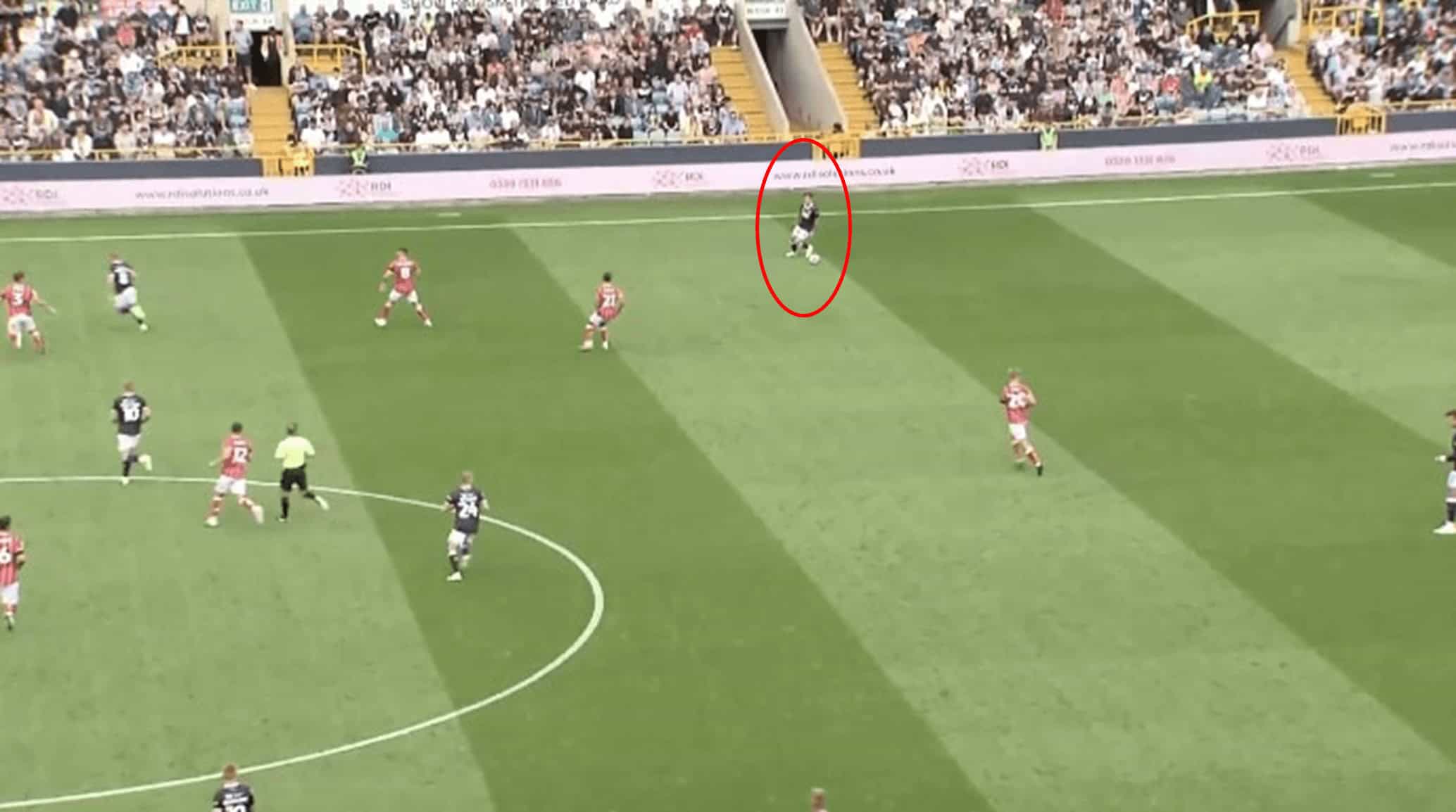
The play is continually passed around the back with no obvious options in the midfield. The transition from the defensive line to midfield is then stagnant.
The ball is eventually worked back to the goalkeeper, who launches it forward. A common theme in such scenarios like this is that Millwall eventually plays the ball long. However, such long balls can reduce passing accuracy and gift possession back to the opposition.
The Den can be an unforgiving environment, even for the home side. If Millwall struggle to get a grip of a match at home early doors, the rest of the match can become an uphill battle.
Three at the back debate
Whilst the 3-4-3 formation has been worthwhile away from home, there is much debate amongst Millwall supporters as to the best formation to utilise. Millwall started last season with three at the back, but their upturn in form coincided with switching to the 4-2-3-1 formation. The change in tactic led them to be undefeated in 73% of the following 33 league matches when starting with this formation.
Rowett did experiment with three at the back in the penultimate game last season and would often change formation during matches. He seemed keen to implement a defensive three for this season, switching to 3-4-1-2 during pre-season. The idea was that having two upfront would create more opportunities to score goals.
The switch in formation does not seem to have had the desired effect, though Millwall scored 1.33 goals per match when starting with this formation. On the other hand, when Millwall have lined up in a 4-2-3-1 from the start of this season, they have scored 1.5 goals per match.
Zian Flemming and Tom Bradshaw linked up well last season under the 4-2-3-1.
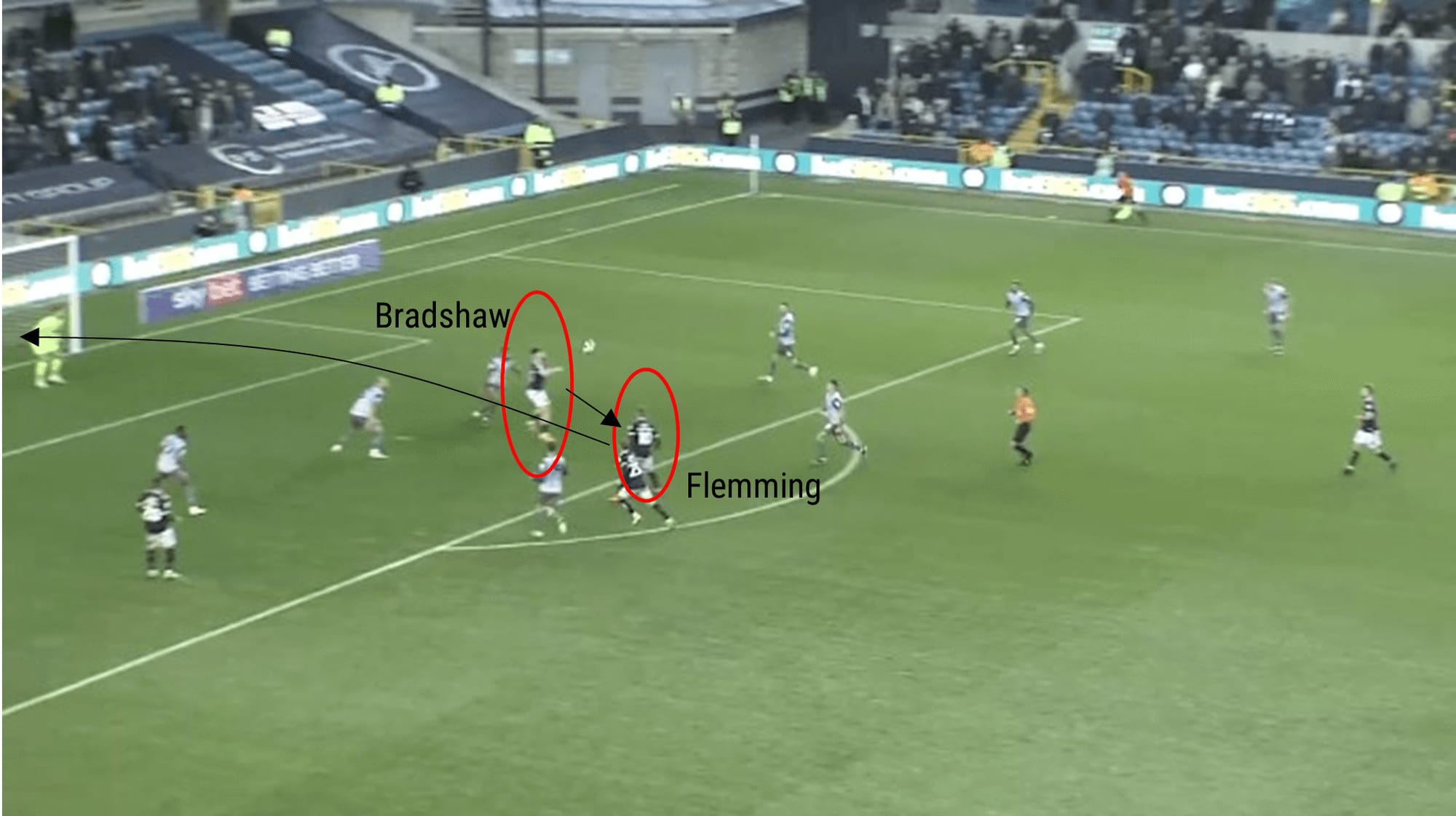
In this instance, Bradshaw was able to beat the ball down to Flemming, who could dispatch his effort. Although Bradshaw has been slightly hampered by injury this season, both players have been less effective in front of goal this campaign. Flemming’s goals per 90 rate have dropped by 26%, while Bradshaw’s has fallen by 72%.
Bradshaw had finished Millwall’s top goal scorer last season with 17 goals. This was the highest goal tally by any Millwall player in the Championship since it formed in 2004. With both players unable to replicate last season’s form, it seems unsurprising that Millwall have seen a decline in goal rate per match this campaign.
Millwall have been much weaker defensively when starting with four at the back this season. They have conceded 2.5 goals per match with a back four compared to conceding 1.18 goals per game with a back three in all competitions.
Millwall’s defence knows how to grind out results, but Rowett’s preference for three at the back this season seemed logical to provide a wide attacking outlet with wing-backs who could also track defensively to form a back five. Moreover, playing three at the back gave the back line strength in numbers as the centre-back options at The Den lack pace.
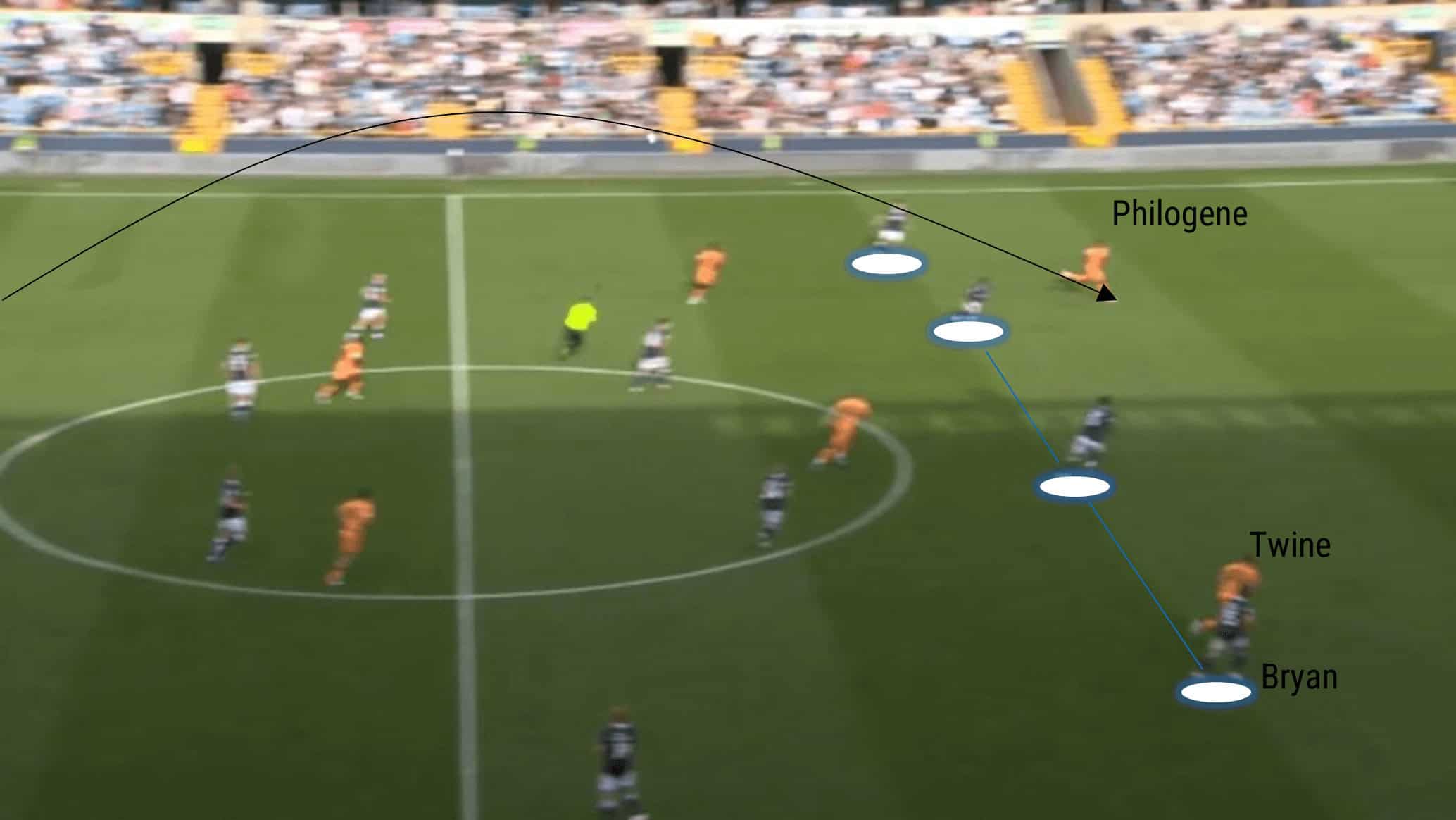
In the above image, when playing a 4-2-3-1, Hull’s Jadon Philogene has beaten the offside trap and outpaces the Millwall back four. Moreover, on the right-hand side, Scott Twine has beaten Joe Bryan for pace to offer support in attack. However, Philogene did not need this teammate’s help on this occasion as he went on to equalise for the Tigers.
A deeper extra centre-back, in this instance, may have helped Millwall and given the opposition much less space to exploit. Despite the advantages of a back three, defensive elements of the Lions’ play have not quite met the same standards as last season.
Millwall have made fewer interceptions this season at 9.33 per 90 compared to 10.2 per 90 in the league last season. A reduction in interceptions is likely to have meant fewer opportunities to transition from defence to attack quickly.
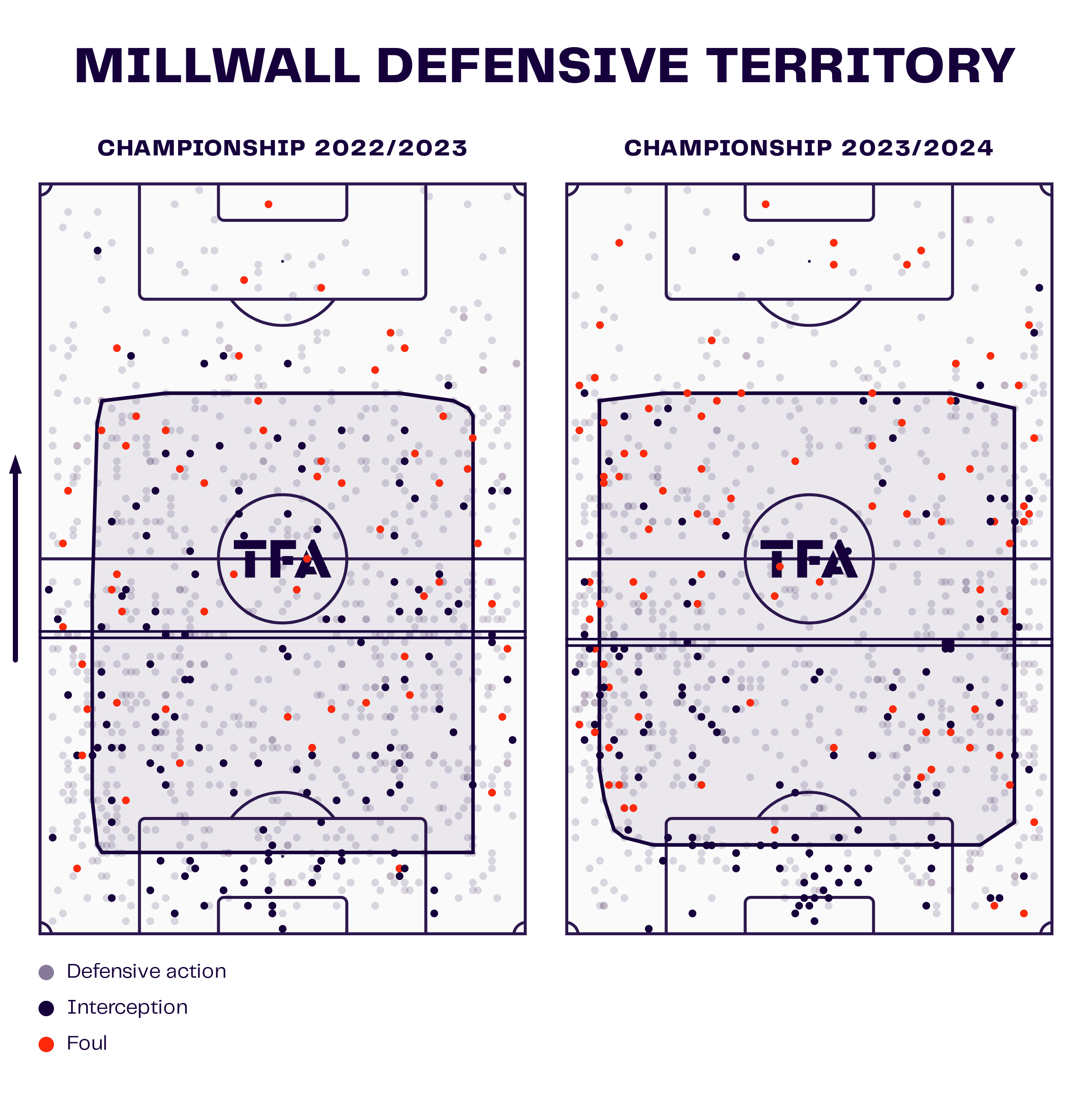
The graphic shows that Millwall have kept a slightly deeper defensive line this season. Moreover, they are committing more fouls in the defensive third. The Lions have committed the second-highest number of fouls in the division this season at 14.1 per match.
Committing such fouls obviously give possession back to the opponent and, therefore, limits Millwall from regaining possession. For a side that has inferior possession rates generally, it seems folly to gift possession to the opposition in such a way.
However, it is a potential tactic to frustrate the opposition and prevent them from getting into an attacking stride. Millwall have shown they are committed to defending set plays this season, as only themselves and Ipswich have yet to concede from a free kick or corner.
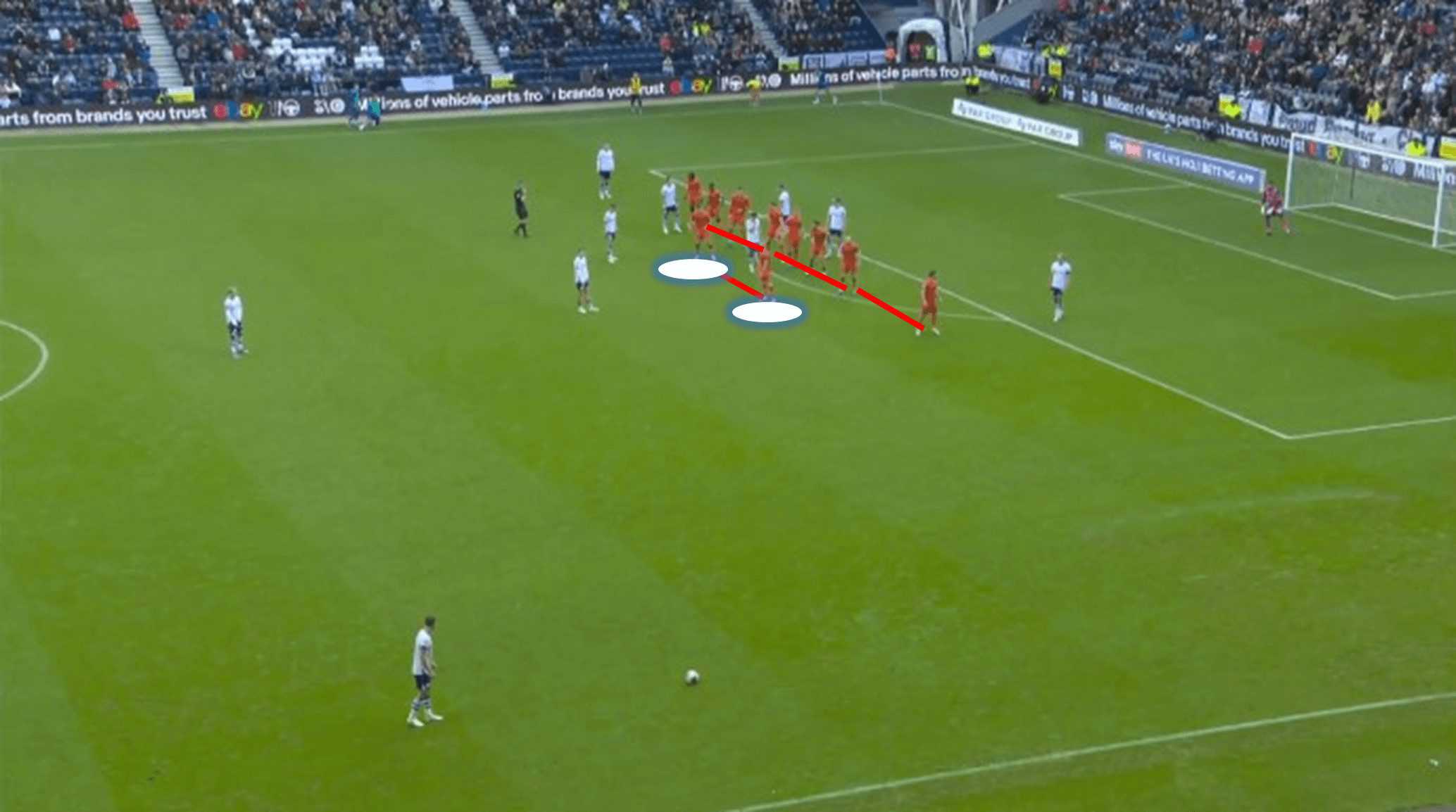
It is shown in the above match still the high line that Millwall adopt when defending free kicks. The East London outfit are a very organised unit defensively and dominate aerially as they often win the first ball when defending such set plays.
It is shown here that two players are positioned slightly advanced of the defensive line, but all outfield players have come back to defend, highlighting that Millwall defend quite compactly. There appear strong foundations to build on at The Den.
Conclusion
In this tactical analysis, we have shown that Millwall’s lacklustre start to the season is consistent with the last three seasons overseen by Rowett. We have determined that the Lions’ direct style of play has been more suited away from home this campaign. The East London side have tended to get better results when having less possession than their respective opponents.
We have shown the advantages and disadvantages of the changing tactical shape adopted by Rowett this season. More tactical decisiveness will be needed if Millwall are to progress this season. They have still shown they can be a strong defensive unit this campaign but need to show more authority in their attacking play if they are to challenge for promotion.
Rowett’s replacement will be tasked with finding a level of consistency at The Den if Millwall are going to progress and turn their underwhelming season around. But it is certainly achievable if the last three seasons are anything to go by.





Comments